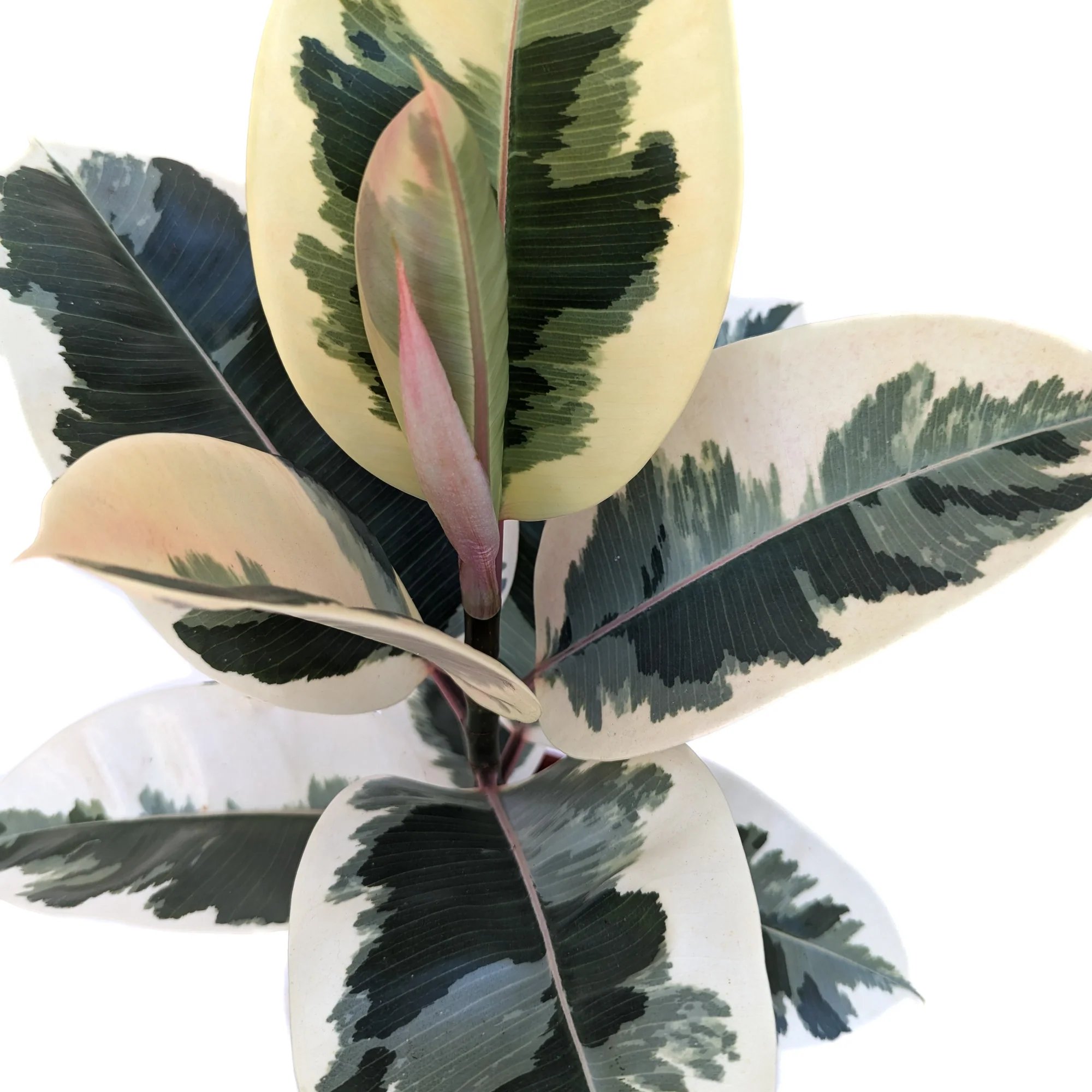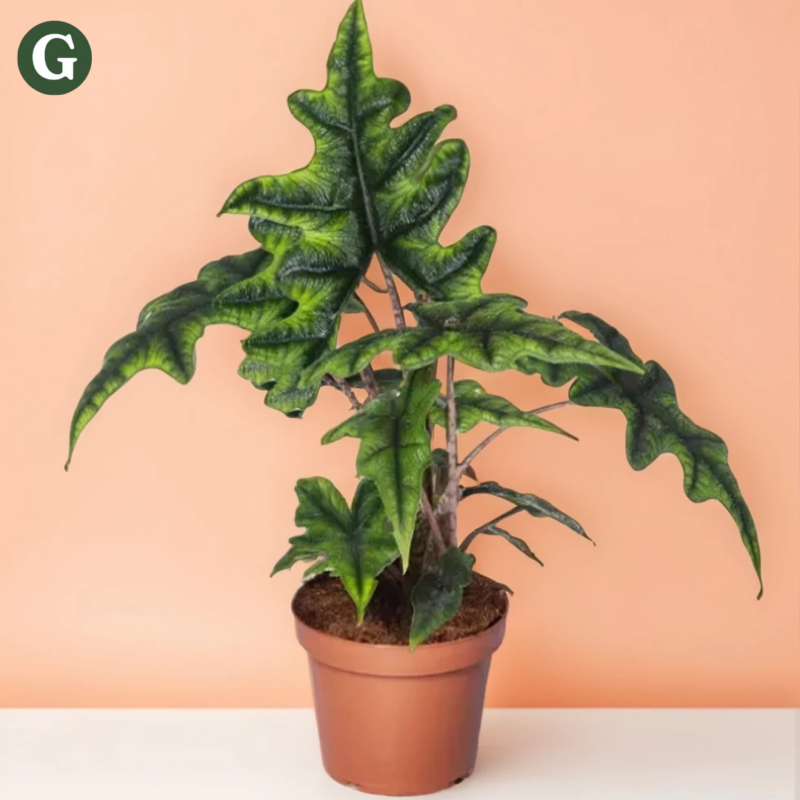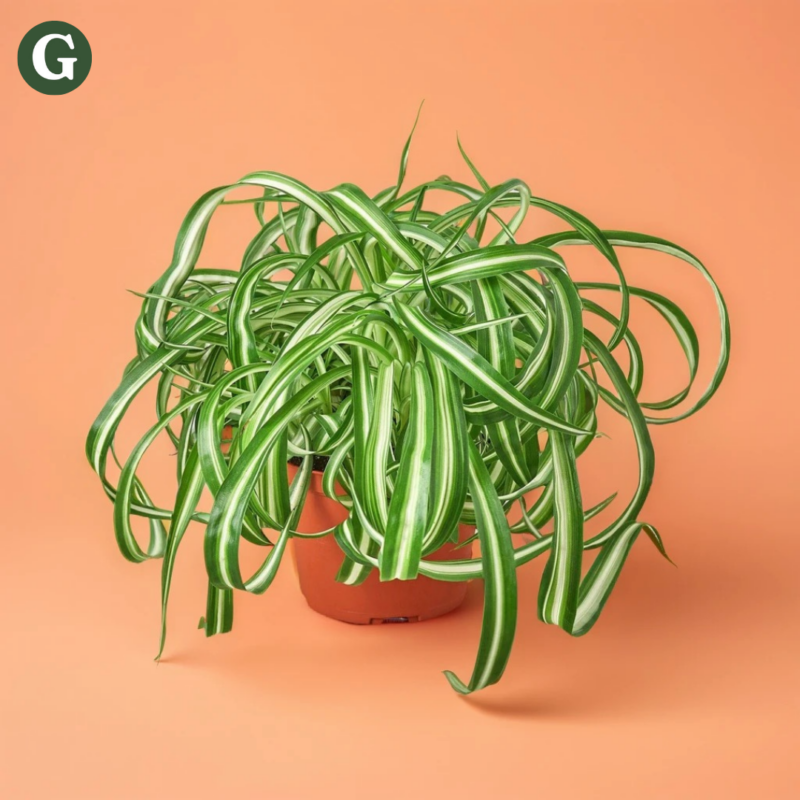Ficus Elastica ‘Tineke’
Botanical Name: Ficus elastica 'Tineke'
Common Name(s): Tineke Rubber Plant, Variegated Rubber Plant
The Ficus Elastica Tineke is a stunning Rubber Plant, known for its bold, glossy, variegated foliage. This cultivar features large, thick, dark green leaves with beautiful creamy-white or pale yellow streaks and speckles, giving it a striking, marbled appearance. The contrast between the dark green and lighter variegation makes this Ficus a standout in any home or office setting, adding a touch of elegance and tropical flair to interior décor.
Native to the tropical regions of Southeast Asia, The Ficus Elastica Tineke thrives in warm, humid conditions, but it is well-suited to indoor environments, making it a favorite among houseplant enthusiasts. It can grow up to 6-10 feet (1.8-3 meters) tall indoors, though it can be pruned to maintain a more compact size. This plant has an upright, tree-like form with leathery, oblong leaves that grow alternately along thick stems, giving it a bold, architectural presence. Its slow to moderate growth makes it ideal for spaces where vertical height and statement plants are needed.
This Ficus thrives in bright, indirect light to maintain its vibrant variegation. While it can tolerate lower light levels, the variegation may become less pronounced, and the plant may become leggy. Direct sunlight should be avoided, as it can scorch the leaves, causing brown or yellow patches. Ideal temperature conditions for the Tineke Rubber Plant are between 60-75°F (16-24°C). It’s also important to keep the plant away from cold drafts and sudden temperature fluctuations, as it can stress the plant.
As a tropical plant, this Rubber Plant enjoys moderate humidity. While it can tolerate average indoor humidity levels, the plant will benefit from occasional misting or a humidity tray in drier environments, particularly in the winter when indoor air tends to be drier. Cleaning the glossy leaves with a damp cloth can help maintain their shine and remove any dust buildup, ensuring the plant can absorb sunlight efficiently.
Note: This plant is toxic to pets, especially cats and dogs, if ingested. The plant contains a milky sap that can cause stomach ache and can irritate the skin or eyes.
Care Insights & Expert Tips
- Repotting: Repot every 1-2 years, or when the ficus becomes root-bound. Handle with care as the sap can irritate the skin.
- Prune regularly: Prune to rid dead leaves and to encourage new growth.
- Fertilize once a month: Feed your plant with a balanced liquid fertilizer diluted to half strength once a month during the growing season.
- Use organic fertilizers: Organic options, such as worm castings or compost, can be used in place of synthetic fertilizers.
- Encouraging branching: To encourage more branching, pinch back the tips of the stems, which helps the plant become fuller.

Visit our plant care library
Find essential tips to keep your plants thriving, vibrant, and healthy.


















